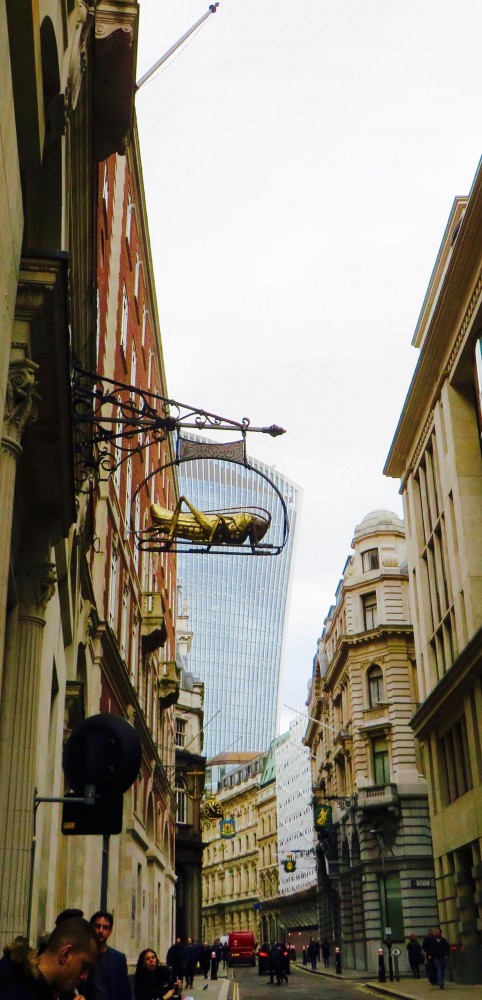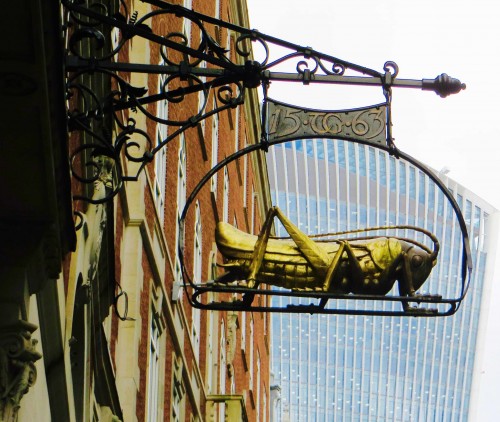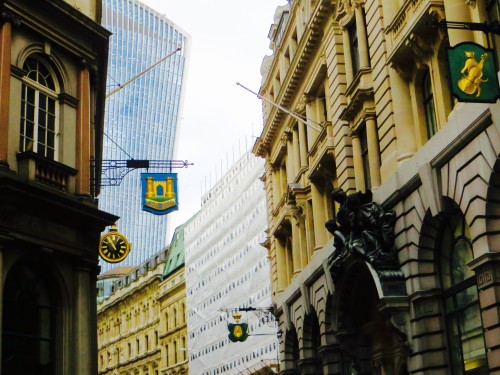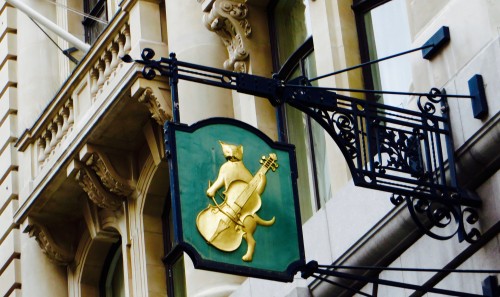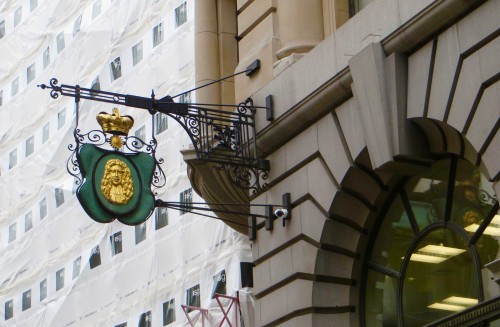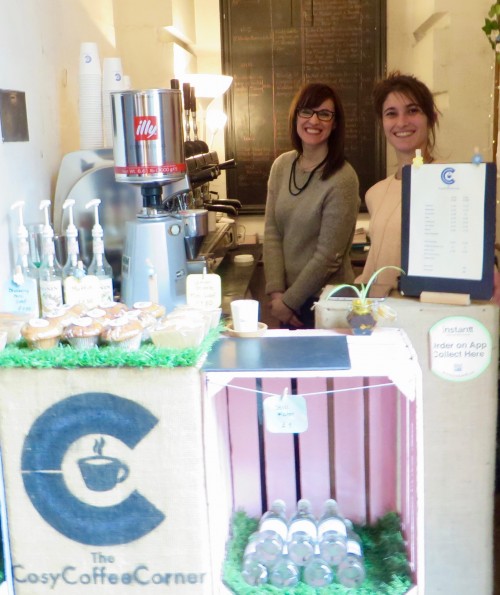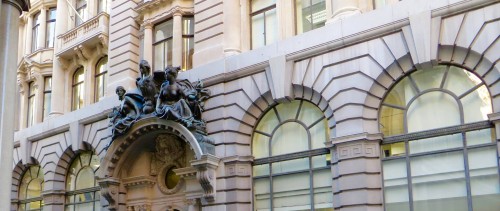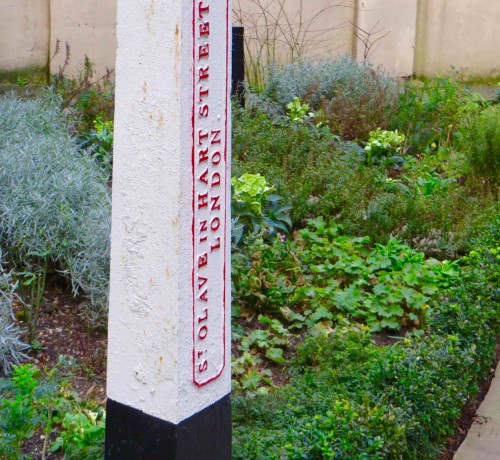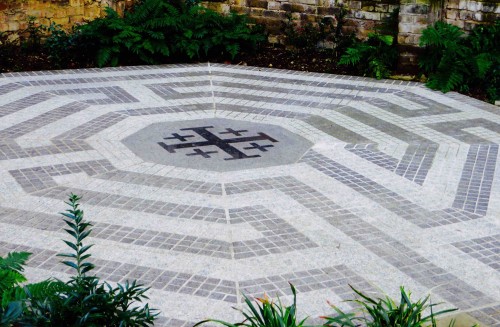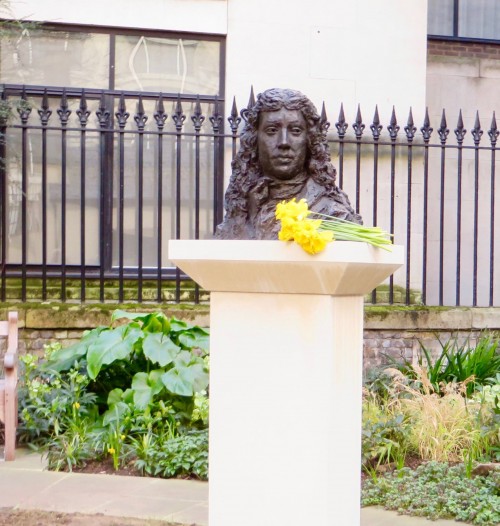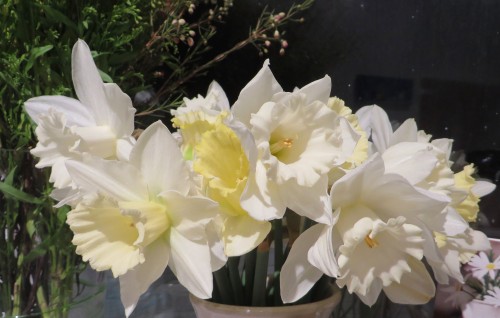‘There’s an exhibition about Samuel Pepys on in Greenwich’, said my friend, Kate. Last time I was in Greenwich was last summer. A place full of grand, light filled spaces – (even though bitingly cold today). In the summer, I was enchanted by the Cutty Sark, the market, coffee upstairs in Waterstones, the wide roads and impressively flagged pavements, imposing buildings and oodles of rolling green lawns all the way up to the Observatory. The panorama of the City from the top of the hill is magnificent. Inside is John Harrison’s famous clock, (which John chose to do a project on at school).
It was all of that, plus Kate’s company, rather than Samuel Pepys himself, which led me to Bank station on a drizzly, finger freezing, windswept morning. We had planned to take the DLR from there to Greenwich. Bank underground is a maelstrom of people, surfing in and out of a massive maze of exits and entrances.
Lombard Street was the nearest exit to the DLR, so I climbed the steps to the street, texted Kate to let her know where I was – and waited. I was ten minutes early, so decided to walk up Lombard Street, which I found was chock full of history.
There’s a small Sainsbury’s supermarket on the ground floor of one of the buildings. This used to house Lloyds Coffee House – a place where merchants, bankers and insurance men met in mediaeval times to do business, as ships came into dock with their cargo. The coffee house later transmuted into Lloyds of London – the insurance company we know today. You can look further into this and find out the connection between the Lutine Bell and Lloyds of London, where it now resides in semi-retirement.
Lombard Street is also home to the Gresham Grasshopper. I’m not sure about the significance of the grasshopper bit but it certainly warrants your attention. It’s on the Gresham coat of arms. Sir Thomas Gresham 1518 – 1579 gave the City of London two great institutions. The Royal Exchange (where the Lutine Bell resided in the 1890s until 1928) and Gresham College.
Kate phoned. She’d gone to London Bridge by mistake but was on her way. I shivered and at the same time my eye lit on a board, creaking in the wind outside St. Mary Woolnoth church. It had a drawing of a steaming cup of coffee on it. What a welcome thought! I followed a City type with his well polished briefcase up the steps, imagining a rather hollow and dusty interior, smelling of cobwebs and candlewax and times past.
But it wasn’t like that at all. A small porch, before you even enter the church, has been made into a warm and inviting tiny café, run by two very entrepreneurial young women, who welcome you with huge smiles. A comfy armchair and a pile of books and magazines fill one side of the porch, where you can make yourself at home. Very tempting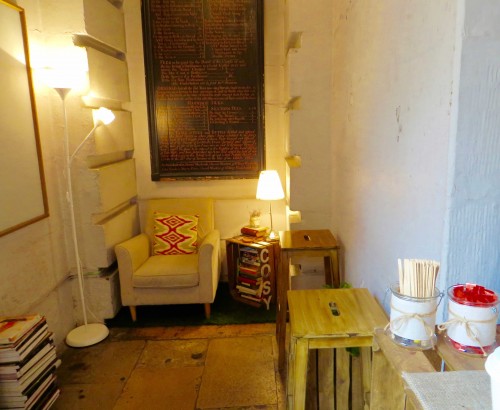
Irresistible! – St. Mary Woolnoth café – Lombard Street EC3
The City man greeted the girls and asked for ‘the usual’ please. He probably works at The Bank of England in Threadneedle Street – across the road.
This tiny niche of a café, hidden from the street, is obviously visited regularly by those ‘in the know’. If it hadn’t been for Kate getting in a muddle I wouldn’t be ‘in the know’ either I thought, my hands embracing a steaming cup of coffee.
info@thecosycoffeecorner.com. Tel. +44(0)790 6577 152.
By the time Kate arrived, I was quite perked up for the DLR trip via Canary Wharf to Greenwich.
The wind whipped darts of freezing rain at us, as it tore at our brollies but it was a short walk to the delights of the National Maritime Museum, where Pepys awaited. I had read some of his diaries, which are in code (but he left a crib right next to them). It is a wonderful, personal picture of daily life during the time of Charles I, Oliver Cromwell and Charles II. Pepys lived through the Great Fire of London and the Plague and even spent time in the Tower – but escaped execution, unlike his king.
The catalogue, which I bought after seeing the exhibition, is really worth the expense. It is published by Thames & Hudson. “Samuel Pepys, Renaissance Man” is a biography by Claire Tomalin. She writes ‘Reading the diary, you feel he is holding his hand out to you. You become his friend’. I felt exactly like that.
Pepys was born in London in 1633, the son of a tailor, living off Fleet Street. His wife, who was fifteen when she married him, was half French. He got his position at the Navy Board through his distant cousin, Edward Montagu. Pepys was quick to learn and quite a polymath.
Pepys loved music. He played several instruments and gave musical parties. He also loved the theatre, paintings and reading and later in life, set up his own library.
Although he wasn’t a scientist he was interested in everything from anatomy to astronomy and knew Hooke, Boyle and the physician Hans Sloane, as well as Christopher Wren and Isaac Newton. He became the President of The Royal Society because of his interest in science.
He was drawn to the attractions of many women but at the same time loved his wife dearly. He describes his day-to-day life very frankly! Nothing seems to be missed out … which makes it such fun to read.
I was intrigued by Charles II’s many mistresses, whose portraits are in the exhibition. One in particular appealed to me – Louise de Kérouaille was from a Breton noble family. The king called her his dearest ‘Fubs’, on account of her chubby face. The fact that she was both French and Catholic did not endear her to the English court. But she was smart as well as pretty.
I don’t have any photos of the exhibition – which means that you should go and see it for yourselves! I felt so moved by it that I decided to go and visit Pepys’s grave. He is buried in the church of St. Olave, where he worshipped on Sundays with his wife. It is on the corner of Seething Lane and Hart Street – EC3 – not so far from Tower Bridge.
I arrived with a bunch of daffodils, which I laid on his memorial in the small churchyard.
I felt really happy to have done this. Writing those diaries over ten years has left us a wonderfully personal memoir of both the man and the age in which he lived. This is my preferred way of learning history! He would have made a fascinating companion. Do go and see the exhibition – I didn’t expect to enjoy it as much as I did.

